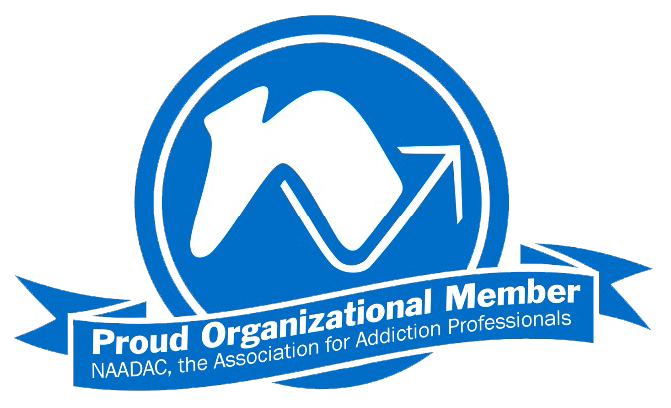-
GeneralGeneral
-
Homepage


Welcome to Substance Use Disorders in Primary Care (SUDPC). The SUDPC course provides an introduction to the prevention, screening, and treatment (medication, risk of interactions with substances, psychological therapies) of substance use disorders related to alcohol, tobacco, and other drug use. The course also provides an introduction to the health consequences associated with substance use disorders and the links between substance use disorders and mental health disorders. Students will gain practical knowledge on how to communicate with patients, conduct a medical consultation to assess substance use disorders, monitor treatment effects, and decide when to refer their patients to specialized settings. The course uses various formats of learning resources (e.g., academic publications, health agencies recommendations, medical associations recommendations, and government guidelines), and its activities allow students to practice techniques with their local peers in hopes of reducing the prevalence and burden of substance use disorders.
This SUDPC course is sponsored by the Africa Mental Health Foundation, and the University of Florida. Like all NextGenU.org courses, it is competency-based, using competencies adapted from the WHO Mental Health Gap Action Programme (mhGAP) and learning resources from accredited, world-class organizations such as the National Institute on Drug Abuse, Substance Abuse and Mental Health Services Administration, and the World Health Organization.
The course was initially co-developed by Veronic Clair, MD, MSc, CCFP, FRCPC; Sukhdeep Jassar, MPH; and Abednego Musau, MBChB. The course was redesigned and updated by Pablo Baldiviezo, MD, DiplEd; Carolina Bustillos, MD, DiplEd; Genikka Camille Gabral, B.ED, MSc; Magali Collonnaz, MD, MPH, MSc; Felix Emeka Anyiam, MPH, MScPH, DataSc.; Yhan O'Neil Williams, BSc, Ph.D.; Hugo Rojas, MD, MSc, DiplEd;
For publications on NextGenU.org’s courses’ efficacy, see NextGenU.org’s publication page. Subscribe to our newsletter to be notified of future updates, new courses, and to be part of our community.
There are six (6) modules to complete, which provide an introduction to:
- Introduction to Substance Use Disorder Services in Primary Care
- Addressing Stigma and Protecting Human Rights
- Substance Use Disorders and Primary Health Care
- Using the ASSIST Package for the Assessment and Brief Intervention for Substance Use
- Monitoring, Follow-Up, Comorbidities, and General Well-Being
- Communication with People Seeking Care, Their Caregivers and Family
The completion time for this course is estimated at 148 hours, comprising 28 hours of learning resources, 56 hours of studying and assimilating content, and 64 hours of participating in learning activities and quizzes, to assist the learners in the synthesis of learning materials. This course is equivalent to 3 credit hours.The course requires completion of Discussion Forums and Peer Activities. At the end of each module, there is a practice quiz of ten (10) multiple-choice questions. After you’ve completed each module, quiz, and learning activity, at the end of the course, you’ll have access to a final exam consisting of fifty (50) multiple-choice questions and a chance to evaluate this course. Participants have up to three opportunities to take the final exam and achieve the required score of >=80%.
Once you’ve passed the last test, you will be able to download a certificate of completion from NextGenU.org and our course’s co-sponsoring organizations. We keep your personal information confidential, never sell any of your information, and only use anonymized data for research purposes. Also, we are happy to report your testing information and share your work with anyone (your school, employer, etc.) at your request.
Engaging with this Course:
You may browse this course for free to learn for your personal enrichment; there are no requirements. To register for this course, it is a requirement that learners have a college-level/bachelor's degree.
To obtain a certificate, a learner must first register for the course and then successfully complete:- Pre-test,
- All the reading requirements,
- All quizzes and pass with a 80% with unlimited attempts,
- All peer activities,
- All discussion forums,
- The final exam with a minimum of 80% and a maximum of 3 attempts, and
- The self and course evaluation forms.
To obtain credit:- Complete all requirements listed above for the certificate, and
- Your learning institution or workplace should approve the partner-university-sponsored NextGenU.org course for educational credit, as they would for their learner taking a course anywhere.
NextGenU.org is happy to provide your institution with:- A link to and description of the course training, so they can see all its components, including the co-sponsoring universities and other professional organization co-sponsors,
- Your grade on the final exam,
- Your work products (e.g., case study activities) and any other required or optional shared materials that you produce and authorize to share with them,
- Your evaluations -- course, self-assessments, and
- A copy of your certificate of completion, with the co-sponsoring universities and other organizations listed.
To obtain a degree, NextGenU.org co-sponsors degree programs with institutional partners. To obtain a full degree co-sponsored with NextGenU.org, registrants must be enrolled in a degree program as a student of a NextGenU.org institutional partner. If you think your institution might be interested in offering a degree with NextGenU.org, contact us.We hope you will find this a rewarding learning experience, and we count on your assessment and feedback to help us improve this training for future students.
Here are the next steps to take the course and earn a certificate.- Complete the registration form.
- Take the pre-test.
- Begin the course with Module 1: Introduction to Substance Use Disorder Services in Primary Care. In each lesson, read the description, complete all required readings and any required activity, and take the corresponding quizzes.
This course meets nationally approved standards of education developed for the addiction/substance use disorders counseling profession. This course's participants are assured that the continuing education (CE) credits provided will be accepted toward national credentialing by the NAADAC Certification Commission for Addiction Professionals (NCC AP), as well as by many of the individual state licensing/certification bodies in the addiction and other helping professions.
*The previous version of this course is not available for new registrations. Only students that were registered before can complete it.
-
Module 1: Introduction to Substance Use Disorder Services in Primary Care
 Competency covered in this module:
Competency covered in this module:
- Understand and be receptive to including mental health and substance use disorder services in primary care.
1 SCORM package -
Module1: Lesson 1: General Information
Learning Objective:
Upon completion of this lesson, you will be able to:- Discuss how primary health care can be involved in lessening the burden of mental illness, including substance use disorders.
- Define the concept of "task-shifting."
- Describe the WHO mhGAP principles of care and priority conditions.
- Summarize the science behind substance abuse and its possible effects on health and social functioning.
2 Files, 5 URLs, 1 Forum -
Module 2: Addressing Stigma and Protecting Human Rights
 Competency covered in this module:
Competency covered in this module: - Being aware of and being able to address stigma promoting and protecting the human rights of those you serve.
1 SCORM package - Being aware of and being able to address stigma promoting and protecting the human rights of those you serve.
-
Module 2: Lesson 1: Policies and Legislation
Learning Objectives:
Upon completion of this lesson, you will be able to:- Describe stigma and its potential impact, as well as the practical strategies to address it.
- Describe how physician/clinician attitudes toward patients with substance use disorders can impact recognition, diagnosis, and treatment of patients.
- Illustrate care that is free from discrimination on the basis of race, color, sex, language, religion, political or other opinions, nationality, ethnicity, indigenous or social origin, property, birth, age, or other status.
- Discuss how to provide care in a way that respects the dignity of the person and is culturally sensitive and appropriate.
- Discuss how to minimize stigma, marginalization, and discrimination, and promote the social inclusion of people with mental, neurological, and substance use disorders by fostering strong links with employment, educational, social (including housing), and other relevant sectors.
2 Files, 6 URLs -
Module 2: Lesson 2: International and National Standards
Learning Objectives:
Upon completion of this lesson, you will be able to:- Explain international and national standards, legislation, and policies on mental health and human rights.
- Demonstrate how to pay greater attention to the patient's right to privacy and confidentiality.
- Demonstrate how a patient (or their designated decision-maker) is aware of the proposed therapy and has given their free and informed permission.
5 URLs, 1 Forum -
Module 3: Substance Use Disorders and Primary Health Care
 Competency covered in this module:
Competency covered in this module: - Understand the various best practices for the medical management of tobacco, alcohol, and other substance use disorders in primary care.
1 SCORM package -
Module 3: Lesson 1: Tobacco Specific Information and Approaches
Learning Objectives:
Upon completion of this lesson, you will be able to:- Discuss the effectiveness of tobacco cessation interventions.
- Recognize quick, in-practice resources to support tobacco cessation interventions.
- Describe the personal health disease risks (cardiovascular, respiratory, and cancer) associated with tobacco use.
- Describe the general benefits of quitting smoking.
- Discuss the symptoms of tobacco withdrawal and the methods of dealing with those symptoms.
- Summarize the health consequences of involuntary (secondhand) exposure to tobacco smoke.
- Describe the link between tobacco and Chronic Obstructive Pulmonary Disorder (COPD) and be familiar with best practices for the management of COPD.
2 Files, 10 URLs -
Module 3: Lesson 2: General Approaches to Address Alcohol and Other Substance Use Disorders in Primary Care
Learning Objectives:
Upon completion of this lesson, you will be able to:- Describe the general approaches to address alcohol, tobacco, and other substance use in primary care.
- Recognize the symptoms of acute intoxication for a substance and treat or refer accordingly.
- Demonstrate how to take a thorough medical history, including the history of the presenting complaint(s), past history, and family history (as relevant), and know the red flags for substance use disorders.
- Summarize the evidence-based model of brief intervention in primary care for other psychoactive substances.
11 URLs - Describe the general approaches to address alcohol, tobacco, and other substance use in primary care.
-
Module 3: Lesson 3: Alcohol Use Disorder Specific Information
Learning Objectives:
Upon completion of this lesson, you will be able to:- Describe the specific effects of alcohol on the overall health.
- Describe the specific effects of alcohol on the liver.
- Demonstrate how to assess the person for alcohol withdrawal symptoms and treat or refer accordingly.
9 URLs, 1 Forum -
Module 4: Using the ASSIST Package for the Assessment and Brief Intervention for Substance Use
Competency covered in this module:
- Understand how to effectively screen for substance use disorders using the ASSIST package.
- Be able to deliver an effective brief intervention to address substance abuse.

1 SCORM package -
Module 4: Lesson 1: Ability to Screen Effectively and Quickly for Substance Use Disorders
Learning Objective:
Upon completion of this lesson, you will be able to:- Demonstrate the skills necessary to screen for substance disorders using the ASSIST Screening Tool.
- Recognize the skills required for addiction prevention counseling.
- Demonstrate the skills that help set respectful limits on patient requests for prescription medication.
- Demonstrate how to clearly and supportively recommend treatment to patients with substance use disorders.
- Demonstrate the skills for evaluating a patient’s stage of change, readiness to accept the diagnosis, and readiness to undertake behavior change.
2 Files, 8 URLs, 1 Forum -
Module 5: Monitoring, Follow-Up, Comorbidities, and General Well-Being
 Competency covered in this module:
Competency covered in this module: - Be able to provide general care, monitoring, and follow-up, taking into consideration general health status, common comorbidities, and issues faced by those with substance use disorders.
- Understand comorbidities associated with alcohol abuse, including HIV, depression, psychosis, and reproduction implications such as fetal alcohol spectrum disorders.
- Address special reproductive health issues for women using substances or receiving pharmacological treatments for comorbidities.
- Understand the importance of promoting healthy lifestyles and the general well-being of those with substance use disorders and/or mental health conditions.
1 SCORM package -
Module 5: Lesson 1: Mental Health Comorbidities
Learning Objectives:
Upon completion of this lesson, you will be able to:- Distinguish the link between various mental health conditions and substance use disorders.
- Recognize evidence of SEVERE self-injury such as signs of poisoning or intoxication or signs/symptoms requiring urgent medical treatment such as bleeding from a self-inflicted wound, loss of consciousness, or extreme lethargy.
- Explain how to maintain regular contact and follow-up with patients as needed.
- Explain how to identify and manage depression in all who have a tobacco, alcohol, or other substance use disorder.
- Explain how and when to ask patients for self-harm or suicidal thoughts and how to offer psychosocial support.
- Discuss how to offer psychosocial support to patients with self-harm and suicidal thoughts.
2 Files, 10 URLs - Distinguish the link between various mental health conditions and substance use disorders.
-
Module 5: Lesson 2: Substance Use and HIV
Learning Objectives:
Upon completion of this lesson, you will be able to:- Explain how substance use (including alcohol and tobacco) interacts with HIV.
- Summarize the relationship between alcohol use and HIV, including the increased risk of HIV infection in those who consume alcohol.
- Explore the relationship between Substance Use Disorders and HIV infection.
12 URLs - Explain how substance use (including alcohol and tobacco) interacts with HIV.
-
Module 5: Lesson 3: Substance Use and Pregnancy
Learning Objectives:
Upon completion of this lesson, you will be able to:- Describe the links between alcohol and other substance use and reproduction, and be able to discuss pregnancy planning and contraception methods with men and with women of childbearing age.
- Identify the potential risks of medications and substance use on the fetus or baby when providing care to a pregnant or breastfeeding woman.
- Explain how babies being breastfed by women on medications are monitored for adverse effects or withdrawal, and undergo comprehensive examinations if required.
9 URLs -
Module 5: Lesson 4: Substance Use Follow-Up, Self-Help, Well-Being, and the Community
Learning Objectives:
Upon completion of this lesson, you will be able to:- Recognize when to refer patients - Assist the patient in acquiring healthy lifestyles, which can improve mental health and help manage substance use disorder triggers such as stress - Perform a general healthy weight assessment (BMI, weight, and height)."
- Explain how, at follow-ups, to reassess the person’s expectations of treatment, clinical status, understanding of treatment, and adherence to the treatment and correct any misconceptions.
- Explain how to continually monitor for treatment effects and outcomes, drug interactions with substances (alcohol and illicit drugs), and medicines (both naturopathic and traditional) and adjust accordingly.
- Explore involvement in self-help and family support groups, where available.
- Identify and mobilize possible sources of social and community support in the local area, including educational, housing, and vocational supports.
- Discuss the self-monitoring of symptoms and explain when to seek care immediately.
- Identify when it is appropriate to involve the carer or family member in the person’s care.
- Discuss autonomy and independent living in the community and discourage institutionalization.
- Explore useful self-help and well-being resources for Substance Use Disorder patients.
- Describe when to assist the patient in acquiring a healthy lifestyle, which can improve mental health and help manage substance use disorder triggers such as stress.
- Describe how to perform a general healthy weight assessment (BMI, weight, and height).
28 URLs, 1 Forum -
Module 6: Communication with People Seeking Care, Their Caregivers and Family
 Competency covered in this module:
Competency covered in this module: - Communicate effectively with those to whom you provide care, their family, and caregivers.
1 SCORM package -
Module 6: Lesson 1: Communication Strategies
Learning Objectives:
Upon completion of this lesson, you will be able to:- Demonstrate how to use simple and clear language.
- Demonstrate how to ask the person for their own understanding of the condition.
- Explain how to provide information to the person on their health status in terms that they can understand.
- Recognize that you must be friendly, respectful, and non-judgmental at all times.
- Recognize that communication is clear, empathic, and sensitive to age, gender, culture, and language differences.
- Demonstrate how to respond to the disclosure of private and distressing information (e.g., regarding sexual assault or self-harm) with sensitivity.
- Identify the typical family's reaction to knowledge of substance use issues in a family member.
- Demonstrate how to gain the consent of the person to keep carers informed about the person’s health status, including issues related to assessment, treatment, follow-up, and any potential side effects.
2 Files, 23 URLs, 1 Forum, 1 Quiz -
Course and Self Evaluation & Certificate
 In this section, you can provide feedback about this course to help us make NextGenU.org better. Once evaluations are completed, you will be able to download your certificate of completion.
In this section, you can provide feedback about this course to help us make NextGenU.org better. Once evaluations are completed, you will be able to download your certificate of completion.

